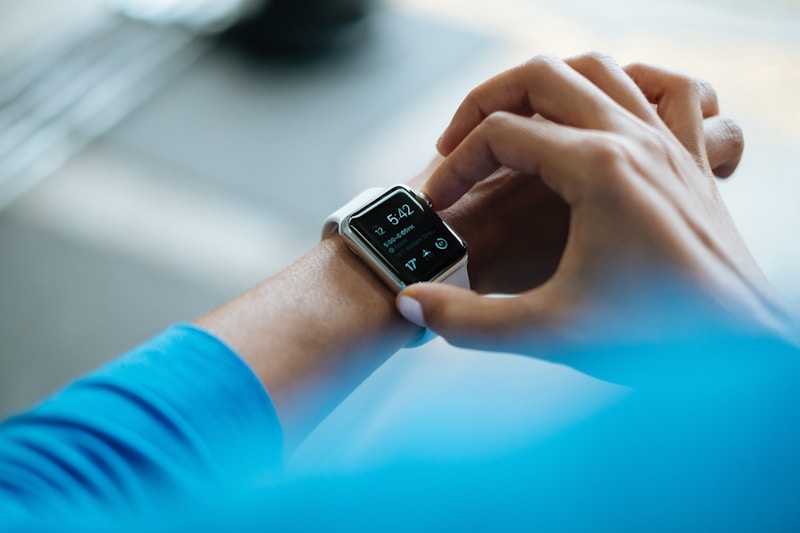Our hands are amazing things. A real marvel of biomechanics, we use them to manipulate our environment; to gather information about the world around us and eloquently express our feelings. For yogis, though, they have another absolutely vital function — supporting us in our asana. But how do they do all of this and just how can we protect them?
The Anatomy
Each wrist and hand is made up of 17 phalanges, 5 metacarpals, 8 bones of the carpus and the distal ends of the radius and ulna. We have a whole range of movements available that allow us to do things like point, grip, press, hold, punch and bear our weight. We can:
- Pronate and supinate our forearm
- Flex and extend our wrist and fingers
- Abduct and adduct our wrist
- Abduct, adduct, flex, extend and circumduct our thumb
- Abduct, or spread, our fingers
To perform these movements we have muscles that originate as far away as the common extensor and flexor origins at the elbow. Other muscles that start from the radius, ulna and interosseous membrane between the bones and the small muscles of the hand, called lumbricals and intersoseii, are tucked between the metacarpals.
The carpal tunnel is found where the wrist and palm join and plays a vital role in keeping the wrist tendons snug against the wrist bones. It is also where the median nerve enters the hand. Pressure on the nerve here can cause tingling in the thumb and fingers that is characteristic of carpal tunnel syndrome.
Handy Hints Every Yogi Should Know
As well as all the normal things humans can do with their hands, yogis use their hands to bear weight in specific poses and during vinyasa. It is a fact of life that the more we practice, the greater the risk of injury, so here are a few tips to keep you and your students safely getting the best out of their hands and wrists.
- Grounding — Inexperienced students frequently dump their weight through their wrists exactly where the carpal tunnel is. This can cause pressure on the median nerve. Encouraging activation of the finger flexors to press the finger tips and knuckles into the floor relieves the pressure in the wrist with experienced yogis managing to actually lift their wrists a few millimetres away from the floor in poses like down dog. Practising weight bearing on finger tips with gorilla, or cup-cake, hands helps to strengthen the forearm muscles to achieve this too.
- Inner and outer spirals — Grounding through the thumb and index finger side of the hand (inner spiral) at the same time as drawing the outer, upper arms back (outer spiral) encourages the combination of forearm pronation and upper arm external rotation that we seek in weight bearing poses.
- Strong shoulders — Activating serrates anterior and the rhomboids to keep the shoulder blade firmly on the chest and drawn away from the ears gives really strong foundations for the arms. This proximal activation increases the efficiency of grounding through the hands and lightens the wrist on weight bearing.
- Even wrist creases — Everyone is built slightly differently and the right way for the hands to point on weight bearing will vary from student to student. Cueing index or middle fingers pointing forwards works for some people as does direction to make an L-shape with the thumbs. Another rule of thumb is that the crease of skin on the back of the wrist during weight bearing on the hands should be of equal depth across its whole length. Students may need to play around with differing degrees of pronation at the wrist and rotation at the upper arm to achieve their ideal.
- Thumb position — Generally we cue students to spread their hand as wide as possible and in the experienced yogi this will underpin best practice. Unfortunately, the inexperienced student trying to achieve spread hands is likely to over work their thumb muscles and give themselves tendonitis. Also called De Quervians Syndrome, this condition can be very painful and cause all sorts of problems on and off the yoga mat, so it’s definitely best avoided. Cueing spread fingers rather than spread hand may do the trick or a quiet word to draw the thumb in a little may be needed.
- Preparation — Students with poor shoulder control and core strength are best advised to modify their practice and work on these areas before tackling more demanding asanas like Down Dog and Chaturanga to prevent wrist injuries. We all know that bad habits are easier to prevent than they are to change so working with students to perfect grounding correctly through their hands and activating the scapular muscles in Puppy Pose or Extended Child’s Pose will develop the correct muscle activation patterns.
See Also: Could Yoga Cause Carpal Tunnel Syndrome?
Modifications for Practising with Wrist Pain
Students with wrist pain often think that yoga is not for them. I am ashamed to admit that I lost one student through wrist pain when I was too inexperienced to give modifications in a fast moving vinyasa flow class. Now that I know better I realise offering the option of weight bearing on fists or forearms can really work well.
Turning Down Dog into Dolphin protects the wrist and has the added advantage of stretching the shoulders — a bonus that the student may not fully appreciate until the pose becomes more comfortable through practice!
Using Extended Child’s Pose with full activation of the arms from shoulder blade to finger tips or a really active Tadasana instead of a vinyasa keeps a student with wrist pain working at an appropriate level between poses in a class.
If necessary, weight bearing through the hands can be avoided completely and a sequence of standing poses, leg balances and sitting poses can be devised. Substituting Shalabasana for Baby Cobra and standing back bends for full Cobra helps to open the chest. Standing side bends and arms held above shoulder height in line with the back leg in high lunges will build core strength.
The Ground Truth
Our wrists and hands are valuable to us yogis — they deserve our attention! Whether you are working with beginners or advanced yogis, spend time concentrating on the finer points of practice in their arms and their wrists in every class. How about a whole class dedicated to what is going on at the hands and wrists? Quite a challenge but well worth it to underpin many years of painfree practice.













